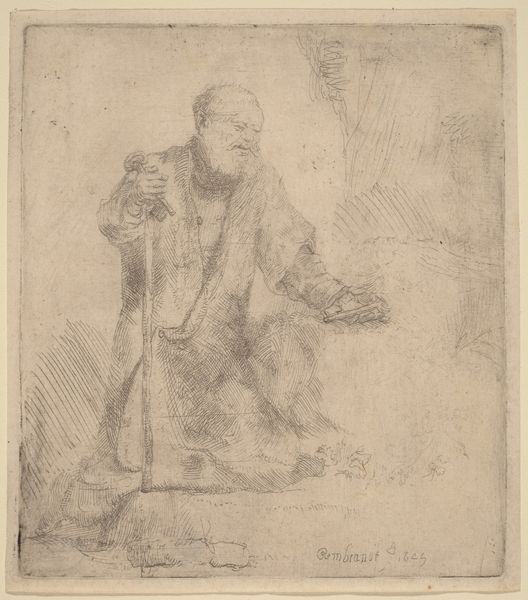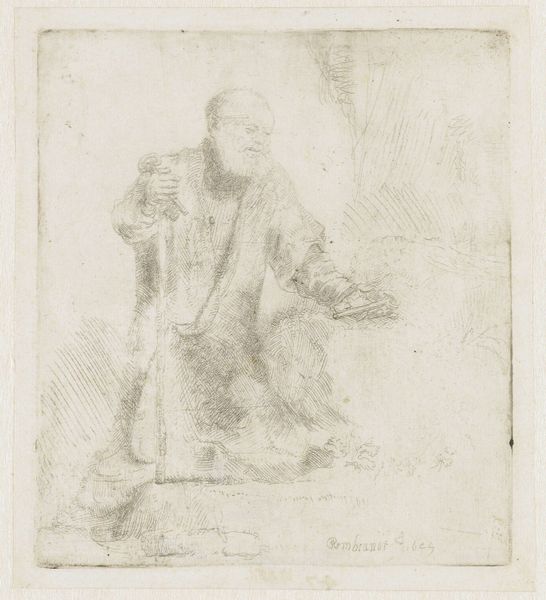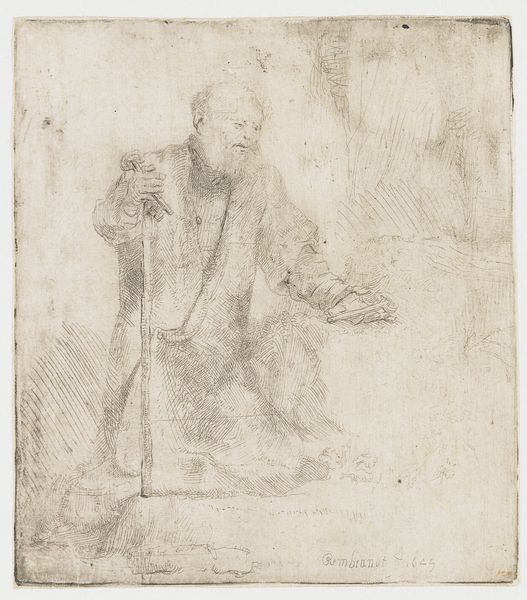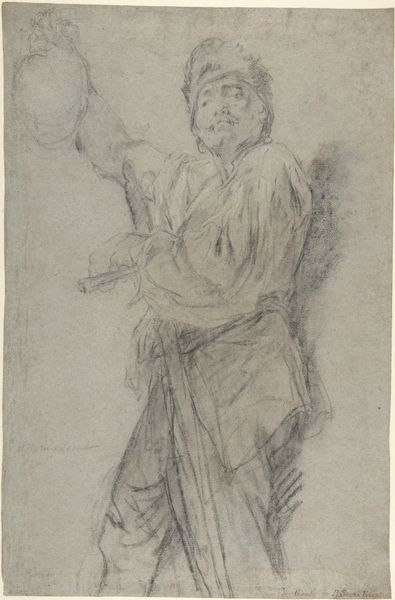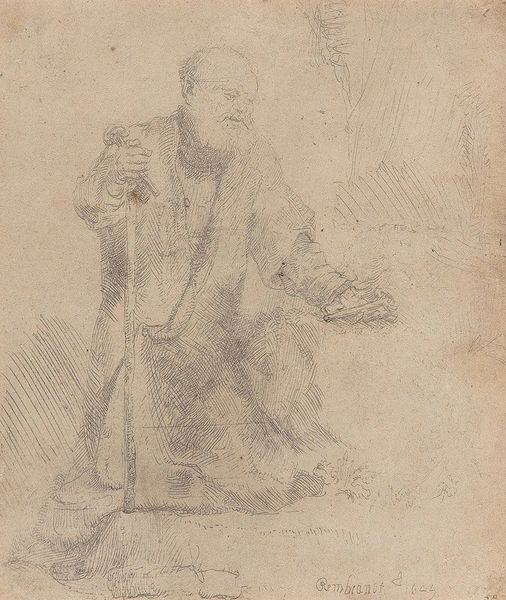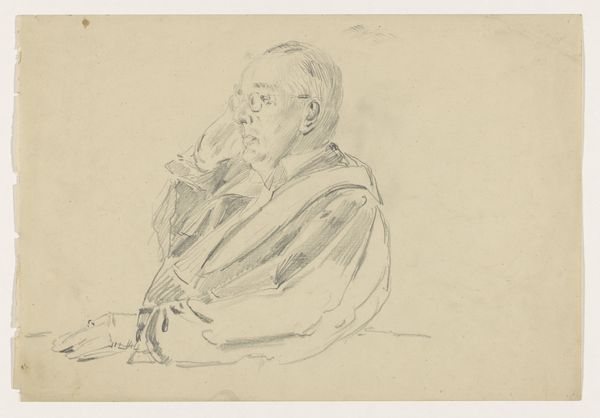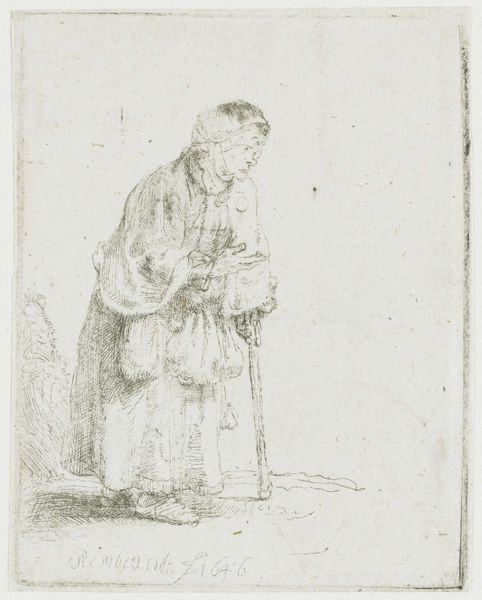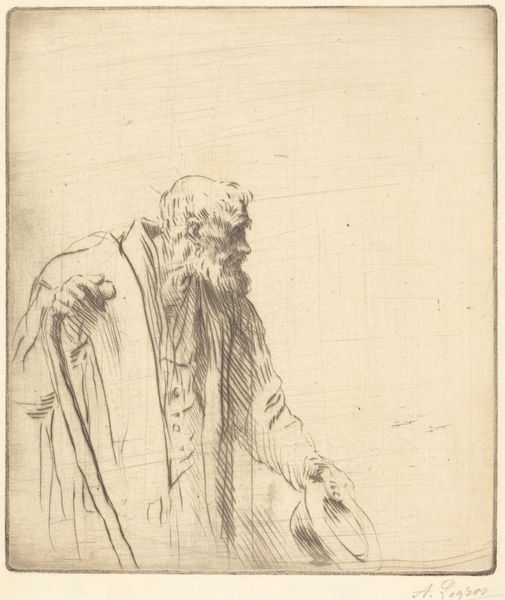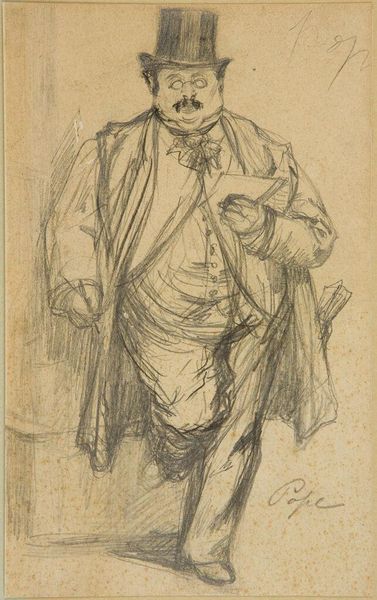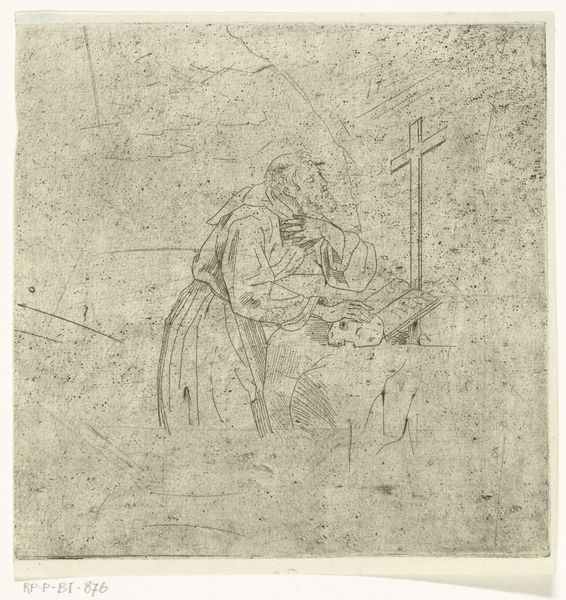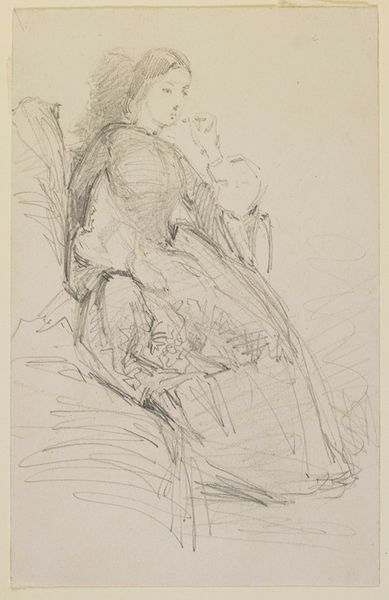
drawing, print, etching, charcoal
#
portrait
#
drawing
#
baroque
# print
#
etching
#
pencil sketch
#
charcoal drawing
#
charcoal
Dimensions: height 132 mm, width 118 mm
Copyright: Rijks Museum: Open Domain
Editor: Here we have Rembrandt van Rijn's "St. Peter in Penitence," an etching from 1645. The lines are so delicate, it looks almost like a charcoal drawing. There’s a quiet sadness to the figure. What stands out to you about this piece? Curator: What strikes me is the relationship between the etched line and the portrayed subject. Etching, a process involving acid to bite into the metal, was becoming more widespread. Consider how this repeatable process allows Rembrandt to create a supposedly "unique" artwork to a wider market. Does the shift in accessibility diminish the spiritual experience? Editor: That's a really interesting question! I guess I hadn't thought about the relationship between the means of production and the message. Do you see that playing out specifically in how Rembrandt rendered St. Peter? Curator: Absolutely. Observe the clothing, how it seems almost like a woven material. This print, then, shows class differences because printed matter and clothing are goods consumed unequally by distinct classes. How does the availability and consumption of religious imagery affect individual interpretations of faith and moral culpability? Editor: So, you're saying the act of mass production affects the consumption of religious imagery and its meaning? Curator: Precisely. And Rembrandt, through his mastery of the etching process, blurs the lines between art as a devotional object and art as a commodity, raising crucial questions about access, value, and belief in the 17th century. Editor: That makes me think about how differently people experienced art then, compared to now, where images are so readily available. Thank you; that really changed my perspective. Curator: My pleasure. Considering the materials and their cultural context often enriches our appreciation and unearths profound questions about the society that produced the art.
Comments
rijksmuseum about 2 years ago
⋮
This old man is the apostle Peter. He is considered to have been the first pope, and the keys he holds refer to the heavenly gate. Perhaps he kneels here penitently owing to his remorse over having denied knowing Christ three times early on in the Saviour’s Passion. The etching lines are remarkably lightly bitten in the copperplate.
Join the conversation
Join millions of artists and users on Artera today and experience the ultimate creative platform.
